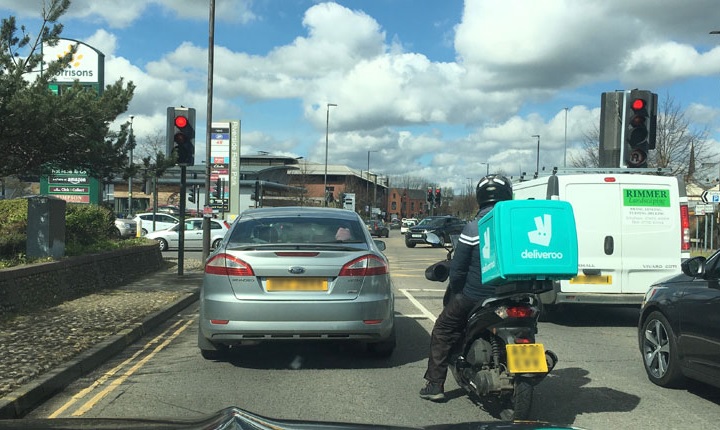
With hot food deliveries now more popular than dining in or takeaway, calls have been made for the apps to take road safety more seriously.
For restaurants offering the option of ordering via a food app, takeaway, or dining in, nearly half of all orders (45%) were made on the apps, indicating that Brits would rather have a night in the comfort of their own home.
Only one third (31%) were prepared to venture out to a restaurant, and just one quarter (24%) opted for takeaway, according to research of 208 restaurants conducted by IAM RoadSmart.
At the same time, work-related motorcycle collisions have increased by 6%; in 2021 there were 2,661 collisions, rising to 2,809 collisions in 2024.
Despite the rise in collisions, IAM RoadSmart found that one in five (22%) restaurants don’t offer any road safety training at all primarily because many of these workers are not directly employed. Only a third (31%) of restaurants surveyed said they directly employ delivery workers under contract.
Among restaurants that provide training and guidance, only one in three require mandatory participation in both practical and online courses. The most common form of support is informational resources (67%).
Only half of restaurants provide high-vis jackets and advanced driving or riding training.
Motorbikes and mopeds are the most common vehicle type for deliveries, with restaurant managers saying they account for just over half (62%) of drop-offs, with cars (59%) following closely.
However, many restaurants have workers using a variety of vehicles to take hot food to people’s homes.
Almost half (48%) of restaurants say their delivery workers are using e-bikes and a third (33%) said e-scooters were being ridden.
IAM RoadSmart also found that many apps deploy pressure tactics designed to increase the number of hot food deliveries a worker makes, including awarding points for every completed order which can then be used to save on fuel and gym memberships.
Nicholas Lyes, IAM RoadSmart director of policy and standards, said: “The food delivery sector has seen rapid growth over the last decade, aided by third party apps, and the success of this model for restaurants has been a lifeline in challenging times such as covid.
“However, this must not come at the expense of safety and a new approach is needed. We’re recommending changes that include better data collection and transparency, a more standardised approach to training and greater recognition for safe delivery workers.”
The publication of this research follows a 2019 study by Professor Nicola Christie of University College London (UCL) which found that motorcyclists operating in the sector feel pressured and are likely to take more risks.
The report also confirmed that app-based delivery causes greater distraction for the rider, and also that these riders are more likely to violate road traffic laws.
In 2023, there were an estimated 463,000 gig economy workers in the UK, with the CIPD assessing that there were around 80,000 working within the food delivery market.
Separate research by IAM RoadSmart shows that more than half (63%) of consumers think that delivery drivers and riders should undertake online road safety training AND on-road training before they can start work.
Comment on this story